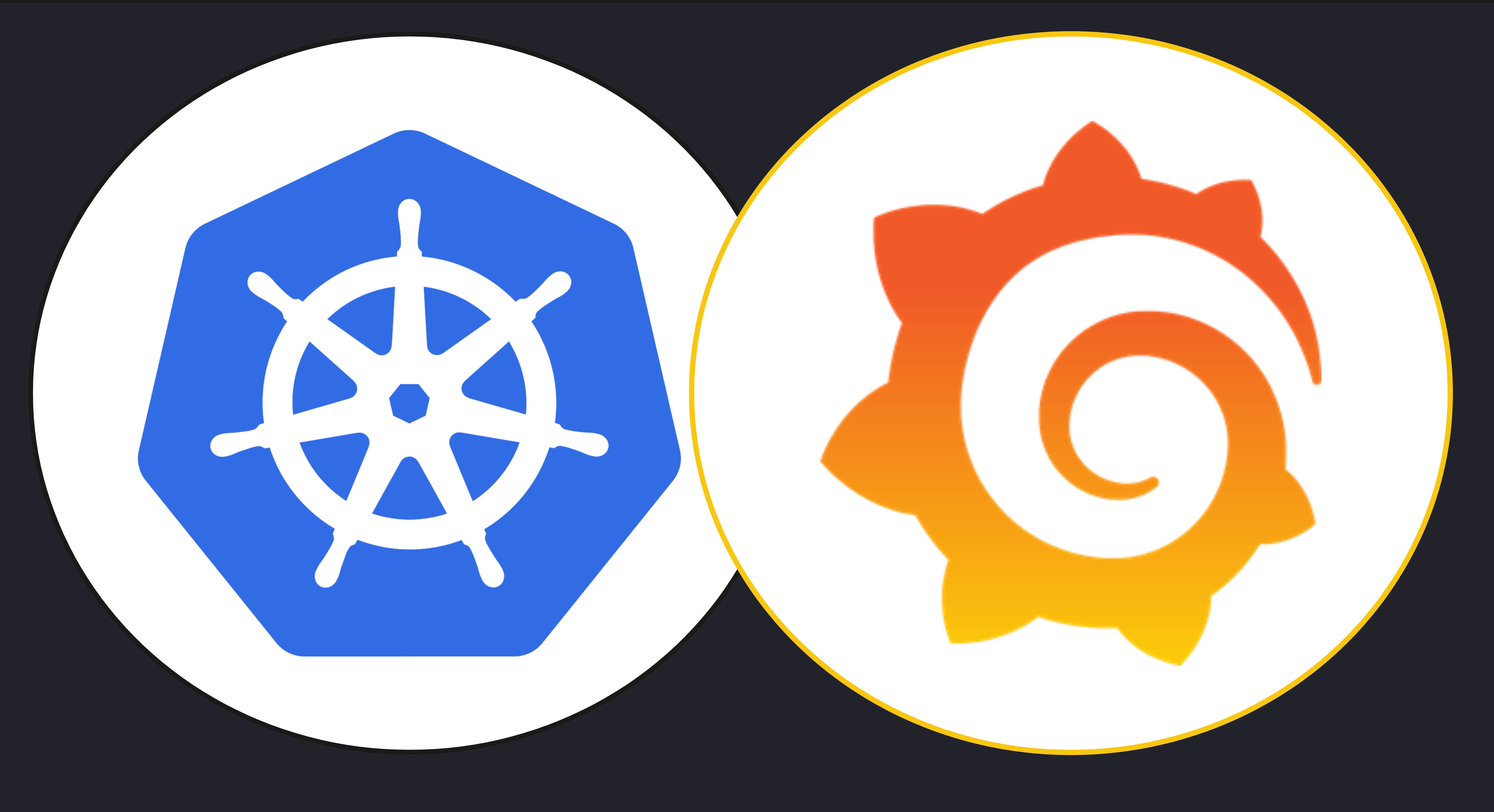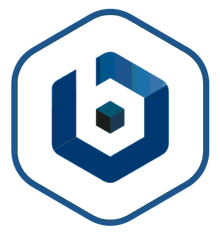
Overview
Grafana on Ubuntu 22.04 with free maintenance support by ATH. This is a repackaged open source software product wherein additional charges apply for support. Grafana is a powerful open-source platform for monitoring and observability that enables users to query, visualize, alert on, and understand their metrics from various data sources, such as Prometheus, InfluxDB, Elasticsearch, and many others. It provides a rich set of visualization options, allowing users to create dynamic and interactive dashboards. Grafana is designed to be highly extensible, with a wide range of plugins available for data sources, panels, and applications, making it a versatile tool for monitoring and analytics across different industries and use cases. Its intuitive interface and robust features make it a preferred choice for developers, IT operations, and business intelligence professionals.
Highlights
- Grafana allows users to create highly customizable dashboards with a wide range of visualization options, including graphs, tables, heatmaps, and more. Users can interact with dashboards in real-time, enabling them to drill down into specific metrics and uncover insights quickly.
- Grafana supports integration with a vast array of data sources, including Prometheus, InfluxDB, Elasticsearch, MySQL, PostgreSQL, and many others. This flexibility allows users to combine data from multiple sources into a single dashboard, providing a comprehensive view of their metrics and performance.
- Grafana includes a powerful alerting system that allows users to define thresholds and conditions for their metrics. When these conditions are met, Grafana can send notifications via various channels, including email, Slack, PagerDuty, and more. This ensures that users are promptly alerted to any issues or anomalies in their systems, enabling quick response and resolution.
Details
Introducing multi-product solutions
You can now purchase comprehensive solutions tailored to use cases and industries.

Features and programs
Buyer guide

Financing for AWS Marketplace purchases

Pricing
Free trial
Dimension | Cost/hour |
|---|---|
m4.large Recommended | $0.009 |
t3.micro | $0.009 |
t2.micro | $0.001 |
t3.small | $0.009 |
m3.medium | $0.009 |
c3.large | $0.009 |
c5.large | $0.009 |
c4.large | $0.009 |
r5.large | $0.009 |
m3.large | $0.009 |
Vendor refund policy
No Refund
How can we make this page better?

Legal
Vendor terms and conditions
Content disclaimer
Delivery details
64-bit (x86) Amazon Machine Image (AMI)
Amazon Machine Image (AMI)
An AMI is a virtual image that provides the information required to launch an instance. Amazon EC2 (Elastic Compute Cloud) instances are virtual servers on which you can run your applications and workloads, offering varying combinations of CPU, memory, storage, and networking resources. You can launch as many instances from as many different AMIs as you need.
Version release notes
Try one unit of this product for 5 days. There will be no software charges for that unit, but AWS infrastructure charges still apply. Free Trials will automatically convert to a paid subscription upon expiration and you will be charged for additional usage above the free units provided.
Additional details
Usage instructions
After successful launch wait for 60 seconds and then Connect your virtual machine via SSH using username "ubuntu". When browsing to http://<Public_IP> you are prompted for a username and password. The username is 'admin' and the password is '<Instance_ID>. Hit of Browser: http://<Public_IP>:3000 username : admin password: <password is your InstanceID>
Support
AWS infrastructure support
AWS Support is a one-on-one, fast-response support channel that is staffed 24x7x365 with experienced and technical support engineers. The service helps customers of all sizes and technical abilities to successfully utilize the products and features provided by Amazon Web Services.
Similar products





Customer reviews
Has provided real-time views and integrated insights across diverse data sources
What is our primary use case?
I am using it myself. My specialty is application performance monitoring, but when I'm putting systems monitoring in place for the backend, Grafana is the best solution for views and dashboards.
I have utilized Grafana 's integration capabilities with Prometheus. In a previous role, we displayed some data with Elasticsearch. I have used it heavily with Zabbix integration as well. I have done Nagios in the past. It depends on the toolset that the customer has, but Grafana is very appealing because the business appreciates the views that come out of Grafana as it gives them the views they want.
I have employed real-time metric visualization capabilities. That's basically what monitoring is - a real-time view. I build up these dashboards or real-time views, but they can also be used as historical views, pulling out more data.
Grafana's role-based access control and multi-tenancy features are important for my organization. At the moment, most of our Grafana is on-premises, but we're looking at cloud options as well. Multi-tenancy is quite important because we have customers that will only want to see their information and not any other. They're not allowed to see some of the other data that we collect, so it's important to have a multi-tenant system.
What is most valuable?
The most valuable feature is Grafana's ability to plug in data or events and monitoring data from any kind of source. The graphing capability is what I use the most.
I have made use of Grafana's customizable dashboards and templating features. These features have enhanced my data visualization and analytical processes by enabling me to give real-time views to our end-users of what they're doing or what their service is doing. The historical and trend data allow people to pull up data from Grafana and from whatever source to display it and examine how an environment is being used.
I have employed real-time metric visualization capabilities for monitoring and real-time views. These dashboards can also be used as historical views, pulling out more data.
The effectiveness of Grafana in delivering real-time notifications through its alerting system is quite good. The widgets are able to highlight errors if they happen in real-time on the dashboard. The alerting functionality is improving. I generally tend to use the monitoring tool for alerting rather than Grafana, but I have had to use Grafana occasionally without any issues.
What needs improvement?
Grafana could be improved through enhancement of graphs and visualizations and providing more integrations. Grafana is going to start working with OpenTelemetry , which would be helpful to have the same sort of design across all different platforms.
I would appreciate additional features in the next release to make it closer to a perfect score. Improved templates would be beneficial in some aspects. Some of the older templates that I used to be able to get in Grafana are only available with a license.
For how long have I used the solution?
I have been using Grafana for about five or six years.
What do I think about the stability of the solution?
The product has been stable. I have never really had any major issues. There have been times when the integrations don't work as smoothly, but that's usually a configuration issue, not the tool itself.
How are customer service and support?
I usually solve problems by myself. I very rarely get in touch with technical support as we don't have that option.
How would you rate customer service and support?
Neutral
Which solution did I use previously and why did I switch?
I used the built-in graphing from the tools themselves before Grafana. I have pushed some data into Power BI as well in the past. I have used various displays, mainly just whatever the platform provides, such as Nagios dashboards, Zabbix dashboards, or SCOM . It depends on what monitoring tool the customer has.
How was the initial setup?
The initial setup for Grafana was very straightforward. I followed along and did some design work. I had to calculate the database size and figure out requirements, but beyond that, it's not difficult to install at all.
Which other solutions did I evaluate?
I did not evaluate other options before choosing Grafana for graphing. Grafana seemed the logical choice. There aren't many other platforms that offer the kind of flexibility and number of integrations that Grafana does. They are quite niche in the graphing and dashboarding space.
What other advice do I have?
I find the pricing of Grafana to be reasonable. I have only ever used the free tier of Grafana, so I cannot comment on the pricing model itself.
Based on my experience, I would recommend Grafana to others.
I rate Grafana an 8 out of 10.
Community support and visualization features impress but integration guides could simplify
What is our primary use case?
For my personal usage, I do use Grafana , and it does make life easier for solving stuff.
What is most valuable?
The main benefits I have seen from using Grafana in my day-to-day activities is the visualization of the metrics, specifically Dora Metrics. Instead of saying 'I feel the team is developing bad or slow,' you can actually have metrics to support that. You can actually show that this team could work better here, in this case, or needs to focus more on peer reviews or on deployments. The visualization of the data is key.
What needs improvement?
For my personal usage of Grafana, I think there could be improvements, particularly that I use the Grafana Cloud SAS solution. The integration guides could be simpler and easier.
Regarding the clarity of the official documentation for installation, I think the official documentation, which has something called Alloy, the Alloy integration, is not that clear. It was mostly for personal usage that I'm talking about right now.
For how long have I used the solution?
I have been using Grafana for around a year, maybe more.
What do I think about the stability of the solution?
Grafana is stable; however, in the previous company, we also had Grafana for a long period of time, and its stability depends on the load. Once you get to a higher load, you need to re-evaluate your architecture and put that into account.
What do I think about the scalability of the solution?
In assessing Grafana's scalability, we started noticing logs missing or metrics not syncing in time, which indicated a bottleneck that we had to address by updating the infrastructure.
How are customer service and support?
I'm not familiar with Grafana's feature in terms of community and documentation since I've been here only a few months. The community provides extensive knowledge about Grafana. You will get faster answers about Grafana than about Datadog from the community.
My advice for people who are new to Grafana or considering it is to reach out to the community mainly, as that's the primary benefit of Grafana.
How would you rate customer service and support?
Positive
Which solution did I use previously and why did I switch?
The reasons for moving from Grafana to Datadog include the fact that Datadog is a SAS solution, and we don't need to manage it. I was told, and as I mentioned I'm kind of new, there was already Datadog running, so it's not creating a new one but just moving the data. The main benefit of Datadog versus Grafana is the ease of creating a dashboard, which is just simple for the user.
What about the implementation team?
In the previous company, about three or four people worked on Grafana implementation. It was an ongoing effort that took several months to complete.
Which other solutions did I evaluate?
Grafana is easier to sell to management compared to Datadog and other solutions because it has an open-source tier, which makes it easier.
If I'm coming as a personal user, then Grafana is the best solution out there right now. But if we're looking at it as an enterprise, then when money is less of an issue, Datadog is much easier to use and implement than Grafana.
What other advice do I have?
Managing and maintaining Grafana is kind of managing another application; as far as Grafana itself, you don't have much to do. It's mostly about the infrastructure, resources, and if you're deploying it in high availability, maybe more instances. So it's mostly infrastructure work and less about Grafana itself.
I rate Grafana an eight out of ten.
Efficient real-time log analysis and resilient adaptation to open source dynamics improve operational workflows
What is our primary use case?
We manage log processing with Grafana because we found that it is much easier for us to manage it on our infrastructure on AWS . We can maintain all the things we do not need. DataDog told us we have to wait and that they need to provide features we need to develop, so it does not suit our needs.
We are still using DataDog, but for important assets that we need to analyze the logs, we send it to Grafana .
The challenges we face with DataDog compared to Grafana include the need to analyze very important brands, network trafficking, and maintaining many websites, most of which are very important domains that cost a lot of money, so we are getting attacked each day and we need to analyze all of the logs. Sometimes we have false positives and things similar to that, so we have to make sure that we are doing the correct decision of blocking or trying to mitigate attacks. Using the logs with Grafana it is much easier for us to analyze rather than DataDog. DataDog has their own language and they want you to plot things with their own vocabulary. We do not have time to memorize things. We especially wanted to use something that was open source at the beginning, and then other people started using it, took that product and modified it for extra cost, but it is a better solution for us.
We switched from DataDog to Grafana because we wanted to reduce the logs costs, as we are streaming approximately five million logs or even less.
What is most valuable?
We can find information with Grafana much more quickly compared to DataDog because it was open source and there was extensive documentation about it, enabling us to fetch data or information much more quickly using AI tools. With DataDog, they always wanted us to have a meeting or talk with us on a call. It was redundant. We just wanted to get to the solution without making a big deal out of it.
Grafana saves us hours compared to DataDog. It takes about two weeks to figure out what is going on with DataDog, but with Grafana, we just started to initialize the service, had a few issues, fixed them, and that was it. I did not have any major problems that forced me to halt everything in my work. It cost me hundreds of hours with DataDog because I needed to see all the documentation and all the special caveats they have there.
What needs improvement?
I would rate Grafana overall as an eight out of ten. It is pretty good, and I would recommend it. I would give it a ten if it were much simpler for users who just want to get a simple objective in Grafana and are not experienced with technical configuration. It would be better if users could simply state they want to see the amount of requests on a graph through an AI implementation. For example, when getting attacked, users should be able to easily filter all requests to a specific site or resource, or identify IPs that were recently attempting access.
I would describe Grafana's ease of use as a necessity to just get things fixed. We are working in a marketing company, and if something does not work great, or people are looking for the solution, I am looking to get a temporary solution until I can fix it properly, and then I can reach support if I cannot fix it for the long-term.
For how long have I used the solution?
I have been using Grafana for quite a long time, but we have only recently started using all of its features.
What do I think about the stability of the solution?
I would rate Grafana's overall stability as much more stable because when it is not working, users are given a much broader oversight of what is not working, rather than talking to DataDog and asking them to check it out. When something in their dashboard does not work, because it is open source, I am able to find all the relative combinations that people are having, making it much easier for me to fix.
What do I think about the scalability of the solution?
The size of our infrastructure affects using Grafana as it really depends on that. We are considered quite small or medium at least, so it is quite easy for us. In terms of our company, the infrastructure is using two availability zones in AWS , one is US East, so we are looking to expand. Currently, we have only two availability zones to deploy, so it is quite easy for us right now.
How are customer service and support?
I do not use Grafana's support for technical issues because I have found solutions on Stack Overflow and ChatGPT helps me as well.
On a day-to-day basis with Grafana, I tend to refrain from using their support, not because of their level of professionalism.
How would you rate customer service and support?
Positive
Which solution did I use previously and why did I switch?
We switched from DataDog to Grafana because we wanted to reduce the logs costs, as we are streaming approximately five million logs or even less.
How was the initial setup?
I initially learned to use Grafana by working locally and seeing how it works and presenting a proof of concept. We started to make a small plan of how we could make the change, how to deploy the switch, making the changes and checking it in other environments that we have. We are working with Agile, so I have to work with development first and then we are staging it. It is a long process but eventually we made the switch quite quickly, it was just a simple day when we deployed it.
What about the implementation team?
Three people manage Grafana in our organization: one is a sysadmin, another one is a DevOps full-time, and I am managing the entire operation.
What's my experience with pricing, setup cost, and licensing?
The costs associated with using Grafana are somewhere in the ten thousands because we are able to control the logs in a more efficient way to reduce it. That is pretty much great for us.
What other advice do I have?
My recommendation for future users of Grafana is that it is all great. I am hoping that all the companies, at least the open-source projects, do not go closed source because then users will have to find something else. That is what we love to do - we love to use open source projects and improve them for our usage, not something that follows an agenda of another company's product.
My recommendation to other users of Grafana is to not be afraid and always look online. I started using it a long time ago for different projects. Users need to learn about the basics before they can really understand what is going on. There are people who start the self-hosted web server and see all the metrics going to their server, but they do not really understand what is happening, they just see a small count of the graph. Users need to understand that configuration is necessary. I experienced this when I started and was clueless, thinking of going to DataDog. Then I realized I just did not understand it correctly - there is much more once you see a bigger horizon of things that you could do.
Overall rating: 8/10
Which deployment model are you using for this solution?
If public cloud, private cloud, or hybrid cloud, which cloud provider do you use?
Dashboard integration and data source setup simplify monitoring tasks
What is our primary use case?
My main use case is monitoring. We use a lot of different products for monitoring, but Grafana is specifically for monitoring Kubernetes . We use Grafana mainly for Prometheus.
What is most valuable?
The features I appreciate most are the dashboards and the integrations with multiple data sources. The feature that sets Grafana apart from its competitors is how easy it is to set up data sources. The integration helps our organization in centralizing and analyzing data from diverse sources.
What needs improvement?
Regarding joining between queries, merging between two queries that give the same information could be simple, and there are some ways to do that, but if there was something even easier, it would be great.
For how long have I used the solution?
The deployment process was completed before I joined the organization. We have been using it for a couple of years, but it was deployed previously.
What do I think about the stability of the solution?
We never had any issues with Grafana at all.
How are customer service and support?
Grafana's customer support is mainly for developers. We didn't need to reach out to them for troubleshooting or any issues.
How would you rate customer service and support?
Positive
What other advice do I have?
We centralize all the metrics from Prometheus and also from Graphite and all other data sources. We have dashboards to integrate Grafana's real-time metrics with visualization capabilities. We're not using Grafana's role-based access control and multi-tenancy features.
Seeing the metrics helps in finding issues, such as memory leaks or spikes and some optimization. We use Grafana on a day-to-day basis to get a better look at our environments and the usage of our resources.
We don't use Grafana for alerting, just for visualization. For alerting, we have different tools. On a scale of 1-10, I would rate Grafana as 8.5.
Which deployment model are you using for this solution?
If public cloud, private cloud, or hybrid cloud, which cloud provider do you use?
Open-source solutions work adequately but future AI enhancements and advanced tracing capabilities are desired
What is our primary use case?
What is most valuable?
What needs improvement?
For how long have I used the solution?
What do I think about the scalability of the solution?
How are customer service and support?
How would you rate customer service and support?
Neutral